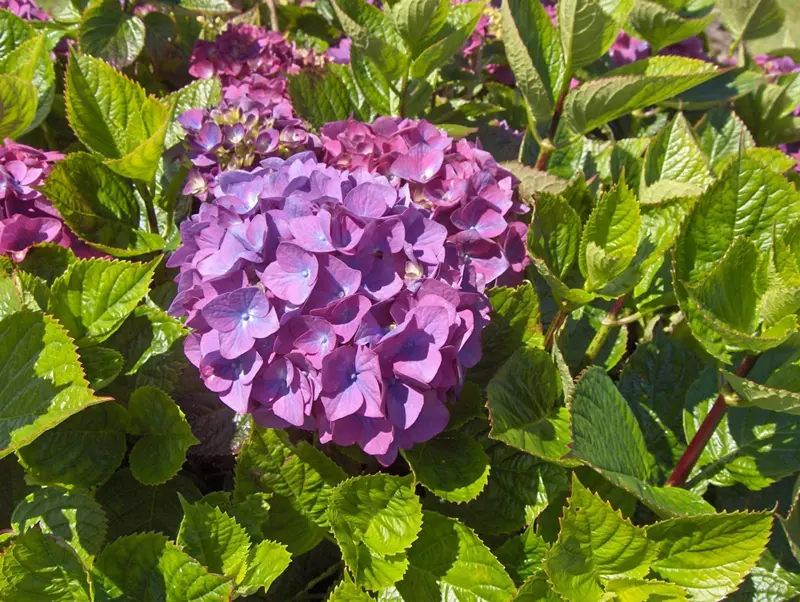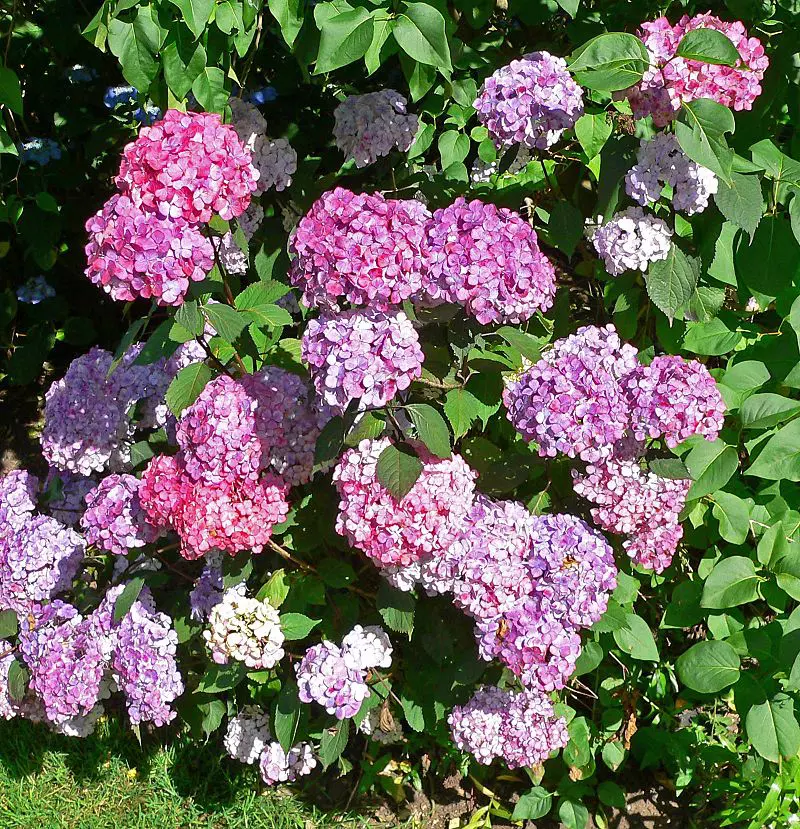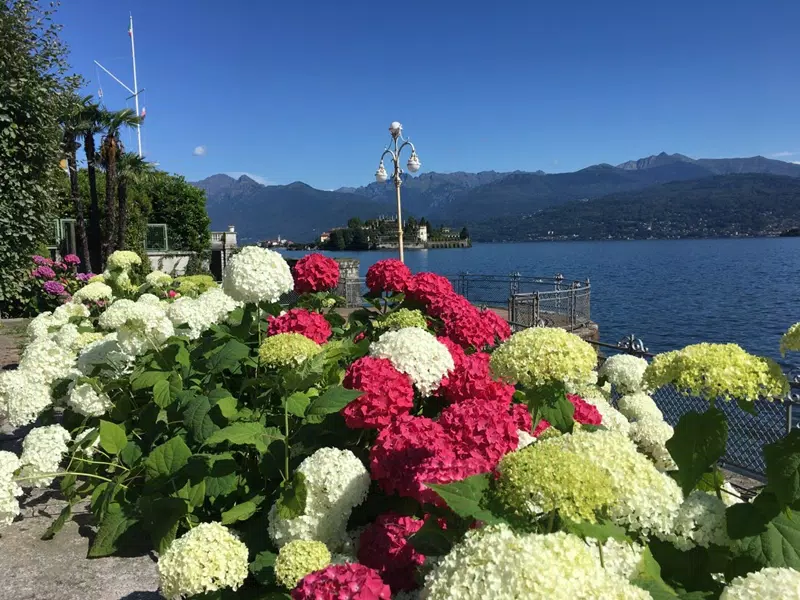
The Ultimate Guide to Hydrangea Euphoria Pink
Discover the Hydrangea serrata 'Euphoria Pink', a stunning variegated hydrangea with vibrant pink blooms. Learn about its characteristics, cultivation, and care in this comprehensive guide.
Read MoreHydrangea serrata, commonly known as the mountain hydrangea, is a compact, elegant shrub that adds subtle beauty to gardens. Its delicate lacecap flowers, versatile growing requirements, and rich seasonal foliage make it a favourite among gardeners seeking understated charm. In this guide, we explore the origins, characteristics, care needs, and popular varieties of Hydrangea serrata, helping you determine if it’s the perfect fit for your garden.
Native to the mountainous regions of Japan and Korea, Hydrangea serrata thrives in cool, temperate climates. Its natural habitat includes shaded forest edges and slopes, making it well-suited to similar conditions in cultivated gardens. This species has been cultivated for centuries, with many beautiful varieties developed for ornamental purposes.

Mountain hydrangeas are smaller and more delicate than their relative, Hydrangea macrophylla. Here are their defining features:
Hydrangea serrata is relatively low-maintenance but thrives best in specific conditions:
Prefers partial shade or dappled sunlight, especially in warmer climates. Avoid full sun to prevent leaf scorch.
Requires fertile, well-draining soil with a slightly acidic to neutral pH (5.5–7). Soil acidity influences flower colour, with more acidic soils producing blue blooms and alkaline soils resulting in pink flowers.
Keep the soil consistently moist, particularly during dry spells. Avoid waterlogged conditions, which can lead to root rot.
Hardy in USDA zones 5–8, Hydrangea serrata is well-suited to cooler regions but requires protection from harsh winds and late frosts.
Mountain hydrangeas are an excellent choice for:
Several cultivars of Hydrangea serrata are available, each offering unique features:
Known for its stunning blue lacecap flowers in acidic soils, ‘Bluebird’ also boasts vibrant autumn foliage.
A versatile cultivar with flowers that change colour as they age, transitioning from pink to purple. Its compact growth habit makes it ideal for containers.
Features bi-coloured blooms with white sterile flowers and pink or red fertile flowers. Adds a unique touch to shaded gardens.
A hardy variety with vivid blue or pink blooms and a bushy growth habit, perfect for mixed borders.
To ensure your Hydrangea serrata thrives, follow these care guidelines:
Hydrangea serrata is a charming and adaptable shrub that brings delicate beauty to gardens of all sizes. Its compact form, seasonal colour changes, and minimal care requirements make it an excellent choice for both novice and experienced gardeners. With numerous varieties to choose from and a range of growing conditions it can tolerate, the mountain hydrangea is a versatile addition to any landscape.
Proper planting is essential to ensure Hydrangea serrata establishes well and flourishes in its new home. This guide walks you through the planting process step by step, ensuring success at any time of the year.
Before planting Hydrangea serrata, it is crucial to prepare both the plant and its location. Here’s what to do:
Select a location with partial shade or dappled sunlight, particularly if you live in a warmer region. Ensure the area has well-draining soil and is sheltered from strong winds.
Before planting, thoroughly hydrate the root ball to ensure the plant transitions smoothly into the soil:
Once your hydrangea is hydrated and your planting site is prepared, follow these steps:
Dig a hole that is twice as wide and slightly deeper than the plant’s root ball. This gives the roots room to spread and settle into the soil.
Mix compost or well-rotted organic matter into the soil you’ve removed from the hole. This enriches the soil and improves drainage.
Carefully remove the hydrangea from its pot, gently loosening any encircling roots. Place the plant in the hole so that the top of the root ball is level with the surrounding soil.
Refill the hole with soil, pressing it down gently as you go to eliminate air pockets. Once the hole is filled, use your hands or feet to firmly tamp the soil around the base of the plant. This ensures good contact between the roots and the surrounding soil.
Water the plant generously immediately after planting. This helps to settle the soil and provides essential moisture for the roots.
Apply a 5–8 cm layer of organic mulch around the base of the plant, keeping it 5 cm away from the stem to prevent rot. Mulch helps retain moisture and regulate soil temperature.
Proper aftercare ensures your Hydrangea serrata establishes well and thrives:
Avoid these pitfalls to ensure successful planting:
Planting Hydrangea serrata correctly ensures a healthy and thriving shrub that will enhance your garden for years to come. By taking the time to hydrate the root ball, prepare the soil, and follow proper planting techniques, you give your mountain hydrangea the best chance to flourish. With consistent care, this beautiful shrub will reward you with delicate blooms and vibrant foliage season after season.
Hydrangea serrata, or mountain hydrangea, is a compact and elegant shrub prized for its delicate lacecap flowers and vibrant seasonal foliage. Proper pruning is essential for maintaining its shape, promoting healthy growth, and ensuring abundant blooms. In this guide, we’ll explain the best time to prune and provide step-by-step instructions for effective pruning.

Timing is critical when pruning Hydrangea serrata. Unlike some other hydrangea species, mountain hydrangeas bloom on old wood, meaning that their flower buds form during the previous growing season. Pruning at the wrong time can result in fewer or no blooms.
Pruning in autumn is not recommended for Hydrangea serrata. Here’s why:
Follow these steps to prune your mountain hydrangea effectively:
Begin by inspecting the hydrangea for dead, damaged, or frost-affected branches. This assessment will guide your pruning decisions.
Use sharp pruning shears to cut back any dead or damaged branches to healthy wood. Ensure your cuts are clean and angled to prevent water from collecting on the cut surface.
Lightly trim the plant to maintain its natural, rounded shape. Avoid cutting back more than one-third of the stems, as this could reduce flowering.
Cut just above the first strong pair of buds below the spent flower head. This encourages new growth while preserving the buds that will produce flowers.
If the plant is overly dense, remove a few interior stems to improve airflow and light penetration. This helps prevent fungal diseases.
To get the best results from pruning, follow these tips:
Avoid these common mistakes when pruning Hydrangea serrata:
Pruning Hydrangea serrata at the right time and with the proper techniques is essential for maintaining its health and beauty. By waiting until spring and focusing on light, strategic pruning, you can protect your plant from frost damage and ensure vibrant blooms in the growing season. With consistent care and attention, your mountain hydrangea will continue to thrive and enhance your garden with its delicate beauty.
The Mountain hydrangea is a delicate and compact shrub that thrives in well-prepared soil. Providing the right soil conditions is crucial for the health and beauty of this plant. In this guide, we’ll explore the ideal soil requirements for Hydrangea serrata and explain why mulching is an essential practice for its care.
Mountain hydrangeas are relatively easy to grow but perform best in specific soil conditions:
Hydrangea serrata thrives in fertile, well-draining soil. Suitable soil types include:
The flower colour of Hydrangea serrata depends on the soil’s pH level:
Use a soil test kit to determine pH and adjust as needed. For more acidic soil, add sulphur or organic matter like pine needles. For alkaline soil, apply lime sparingly.
Well-drained soil is critical to prevent waterlogging, which can lead to root rot. Avoid planting in areas where water tends to pool.
Mulching is a vital practice for maintaining healthy soil and supporting the growth of Hydrangea serrata. Here’s why:
Proper soil preparation ensures your Hydrangea serrata establishes well and thrives:
Once planted, ongoing soil care ensures long-term success:
Address these common soil-related issues to keep your hydrangea healthy:
Symptoms: Yellowing leaves, stunted growth, or root rot.
Solution: Amend soil with organic matter or plant in raised beds to improve drainage.
Symptoms: Pale leaves, poor flowering, or weak growth.
Solution: Fertilise with a balanced product and add organic mulch to replenish nutrients.
Providing the right soil conditions and incorporating mulching into your care routine are essential for the health and success of Hydrangea serrata. With well-prepared, nutrient-rich soil and consistent mulching, your mountain hydrangea will thrive, offering stunning blooms and vibrant foliage throughout the seasons. By following these tips, you can create the perfect growing environment for this elegant shrub.
Hydrangea serrata, or mountain hydrangea, is a compact and elegant shrub that adds charm to gardens with its delicate lacecap blooms and vibrant seasonal foliage. Propagation is a rewarding way to expand your collection or share this beautiful plant with others. This guide covers three reliable propagation methods: cuttings, layering, and division, providing step-by-step instructions for each.
Propagation offers several benefits:
Here are the three most effective ways to propagate Hydrangea serrata.
Propagating from cuttings is a straightforward and reliable method, allowing you to produce multiple new plants.
Layering allows the plant to root while still attached to the parent, making it a low-risk propagation method.
Division is suitable for mature plants with an established root system. It’s best done in early spring or autumn when the plant is dormant.
Propagating Hydrangea serrata is a rewarding way to expand your garden or share this stunning plant with others. Whether you choose cuttings, layering, or division, each method offers unique benefits and ensures healthy new plants. With proper care and attention, your mountain hydrangeas will thrive and enhance your garden for years to come.
Hydrangea serrata, or mountain hydrangea, is a cold-hardy shrub that can thrive in temperate climates. However, proper care and protection during winter are essential to ensure it emerges healthy and vibrant in spring. This guide explores the best practices for winter protection, including mulching, pruning, and soil preparation.
Mulching is a crucial step in preparing Hydrangea serrata for winter. It insulates the roots, retains soil moisture, and prevents temperature fluctuations.
Pruning at the wrong time can leave Hydrangea serrata vulnerable to frost damage. Instead, wait until spring to prune. Here’s why:
Tip: When pruning in spring, remove only dead or damaged wood and shape the plant carefully to encourage healthy development.
Healthy soil is vital for supporting Hydrangea serrata through winter. Proper preparation ensures the plant’s roots receive the nutrients and insulation they need.
Incorporate compost or well-rotted manure into the soil in late autumn. This enriches the soil with nutrients that promote root health and energy storage.
Avoid waterlogged soil, which can lead to root rot during cold weather. If necessary, amend heavy soils with sand or perlite to improve drainage.
In addition to mulching and soil preparation, consider these strategies to protect your mountain hydrangea during winter:
To ensure your hydrangea thrives, avoid these common mistakes:
Proper winter care is essential for the health and longevity of Hydrangea serrata. By focusing on mulching, delaying pruning until spring, and enriching the soil with organic matter and nutrients, you can protect your hydrangea from harsh winter conditions. With these strategies in place, your mountain hydrangea will thrive, providing stunning blooms and vibrant foliage year after year.
Hydrangea serrata, or mountain hydrangea, is a hardy and reliable shrub, but like all plants, it can be susceptible to certain diseases. This guide explores common issues that may affect Hydrangea serrata, offers prevention tips, and provides both organic and conventional treatment methods to ensure your plant thrives.
Understanding the typical diseases affecting Hydrangea serrata is the first step in prevention and treatment. Below are some common issues:
Symptoms: A white, powdery coating appears on leaves and stems, often leading to leaf curling and discolouration.
Causes: Warm, humid conditions and poor air circulation are ideal for the spread of this fungal disease.
Symptoms: Brown or black spots form on leaves, surrounded by yellow halos. Severe cases can cause leaves to drop prematurely.
Causes: Fungal or bacterial pathogens spread through water splash during rain or overhead watering.
Symptoms: Yellowing leaves, wilting, and stunted growth. Roots appear mushy and dark brown.
Causes: Overwatering or poor drainage creates conditions for fungal infections to take hold.
Symptoms: Grey mould develops on flowers and leaves, causing them to decay.
Causes: High humidity and damp conditions encourage the spread of this fungal disease.
Prevention is always better than cure. Here are strategies to keep your Hydrangea serrata disease-free:
Space plants appropriately and prune regularly to improve airflow around the foliage. This helps reduce humidity levels that promote fungal growth.
Avoid overhead watering and focus on watering at the base of the plant. Water early in the day to allow foliage to dry quickly.
Apply a layer of organic mulch around the base of the plant. Mulch helps prevent water splashing, which can spread fungal spores, and keeps the soil moist without waterlogging.
Enrich the soil with compost and ensure good drainage to promote strong root systems and reduce vulnerability to root rot.
Regularly check your plant for early signs of disease and remove any affected leaves or stems immediately to prevent spread.
If your plant develops a disease, take swift action using these treatment methods:
To keep your Hydrangea serrata healthy over the long term, adopt these practices:
While Hydrangea serrata is generally hardy, it can face challenges from common diseases like powdery mildew, leaf spot, and root rot. By focusing on prevention through good watering practices, mulching, and regular inspections, you can minimise the risk of disease. If issues arise, prompt treatment using organic or conventional methods can restore your plant's health. With consistent care and attention, your mountain hydrangea will continue to thrive and bring beauty to your garden.
The mountain hydrangea is a delicate shrub that enhances any garden with its beautiful lacecap blooms and seasonal foliage. However, like any plant, it can face pest challenges. Eco-friendly pest management ensures your hydrangea remains healthy without harming beneficial insects or the environment. This guide explores natural methods to prevent and address pest issues sustainably.
While Hydrangea serrata is relatively resilient, certain pests can occasionally cause damage. Identifying these pests is the first step to effective management:
Symptoms: Small, soft-bodied insects cluster on new growth, leaving behind a sticky residue called honeydew. This can lead to sooty mould.
Causes: Aphids thrive in warm weather and on tender, young shoots.
Symptoms: Fine webbing, yellow or bronze speckles on leaves, and eventual leaf drop.
Causes: Hot, dry conditions encourage spider mite infestations.
Symptoms: Hard, shell-like bumps on stems and leaves, often accompanied by leaf yellowing and sticky residue.
Causes: Scale insects often target stressed or weakened plants.
Symptoms: Large, irregular holes in leaves, particularly in shaded or moist areas.
Causes: These pests are most active at night and thrive in damp conditions.
Prevention is key to maintaining a healthy garden. Implement these eco-friendly strategies to keep pests at bay:
Attract natural predators such as ladybirds, lacewings, and parasitic wasps by planting nectar-rich flowers like marigolds, dill, and cosmos.
Regularly prune your hydrangea to thin out dense growth, improving airflow and reducing the humid conditions that attract pests like spider mites.
Avoid overhead watering, which can create a hospitable environment for pests and spread diseases. Focus on watering at the base of the plant.
Apply a 5–8 cm layer of organic mulch around the base of the plant. This helps to retain soil moisture, suppress weeds, and deter crawling pests like slugs.
Conduct regular checks for signs of pests and take immediate action to address infestations before they spread.
If pests appear, use these natural and sustainable solutions to manage them effectively:
Mix neem oil with water according to the product instructions and spray on affected areas. This organic solution disrupts the life cycle of aphids, spider mites, and scale insects.
Create a homemade insecticidal soap by mixing 1 tablespoon of liquid soap with 1 litre of water. Spray directly onto pests for immediate results.
Remove pests like scale insects or slugs by hand. For scale, use a cotton swab dipped in rubbing alcohol to dislodge the pests from stems.
Sprinkle food-grade diatomaceous earth around the base of your hydrangea to deter slugs and other crawling pests. The sharp particles damage their exoskeletons, causing dehydration.
Place shallow dishes filled with beer near your hydrangea. Slugs are attracted to the beer and will drown in the liquid.
Maintaining a healthy garden environment is essential for long-term pest control. Here’s how to ensure lasting success:
Eco-friendly pest management for Hydrangea serrata is both effective and sustainable. By preventing infestations through healthy gardening practices and using natural treatments when needed, you can protect your hydrangea without harming beneficial insects or the environment. With these strategies, your mountain hydrangea will continue to thrive and enhance your garden for years to come.
The mountain hydrangea is a compact and elegant shrub that enhances any garden with its delicate lacecap blooms and seasonal foliage. Companion planting with mountain hydrangeas can improve their health, appearance, and contribution to your garden’s ecosystem. In this guide, we’ll explore the best companion plants, design ideas, and practical tips for combining them harmoniously.
Companion planting is a strategic way to create a balanced and thriving garden. Here’s how it benefits your Hydrangea serrata:
The ideal companions for Hydrangea serrata share similar growing requirements, such as partial shade and moist, well-draining soil. Consider these options:
Creative companion planting elevates your garden’s design. Try these ideas for a cohesive and beautiful landscape:
Arrange plants in layers based on their height. Place taller shrubs like rhododendrons at the back, Hydrangea serrata in the middle, and ground covers at the front for a structured look.
Pair hydrangeas with plants that bloom in different seasons or offer vibrant autumn foliage, creating year-round visual interest.
Combine hydrangeas with ferns, hostas, and wildflowers to create a natural, woodland-inspired garden bed.
Line garden paths with Hydrangea serrata and low-growing companions like ajuga or liriope for an inviting walkway.
To ensure all plants thrive, follow these care guidelines:
Companion planting with Hydrangea serrata enhances its beauty and promotes a healthy, balanced garden. By carefully selecting plants with complementary textures, colours, and growth habits, you can create a thriving landscape. With proper care and thoughtful design, your hydrangea and its companions will flourish together, providing year-round enjoyment.
Hydrangea serrata is a compact and graceful shrub that brings understated elegance to garden designs. With its delicate lacecap flowers and vibrant seasonal foliage, it is perfect for enhancing shaded areas or creating lush, layered planting schemes. This article explores how to incorporate Hydrangea serrata into your garden design effectively.
Mountain hydrangeas are prized for their versatility and low-maintenance care. Here are some reasons to include them in your garden:
Thoughtful placement ensures your Hydrangea serrata thrives and enhances your garden’s aesthetic. Consider these options:
Place mountain hydrangeas in dappled shade alongside ferns, hostas, and wildflowers for a natural, woodland-inspired look.
Use hydrangeas as a middle layer in mixed borders, where their compact size complements taller shrubs and ground covers.
Small varieties like Hydrangea serrata ‘Preziosa’ are excellent for container gardening, allowing you to move them to prominent spots during bloom periods.
Line walkways with mountain hydrangeas and companion plants to create a charming, inviting path.
Pairing Hydrangea serrata with complementary plants enhances its visual appeal. Here are some excellent companions:
Use these design strategies to make the most of Hydrangea serrata in your garden:
Pair the hydrangea’s blue or pink blooms with plants that complement its colours, such as white daisies or purple salvias.
Plant hydrangeas in front of taller shrubs and trees to create a layered effect that adds depth to your garden beds.
Place hydrangeas in prominent positions, such as at the centre of a flowerbed or near seating areas, to draw attention to their beauty.
Combine the hydrangea’s delicate blooms with plants that offer contrasting textures, like ornamental grasses or sedges.
Proper care ensures your mountain hydrangea thrives in any design:
Choose from these popular Hydrangea serrata varieties to suit your design needs:
Hydrangea serrata is a versatile and stunning addition to any garden design. Its compact size, seasonal interest, and adaptability make it a perfect choice for both small and large gardens. By carefully placing it and pairing it with complementary plants, you can create a harmonious and visually striking landscape. With proper care and thoughtful design, your mountain hydrangea will thrive and delight for years to come.

Discover the Hydrangea serrata 'Euphoria Pink', a stunning variegated hydrangea with vibrant pink blooms. Learn about its characteristics, cultivation, and care in this comprehensive guide.
Read More
A complete guide to Hydrangea petiolaris, including planting, pruning, soil adjustments, eco-friendly pest management, propagation, and garden design ideas.
Read More
A comprehensive guide on planting and caring for hydrangeas, covering site selection, soil preparation, planting steps, watering, fertilising, pruning, and pest management.
Read More